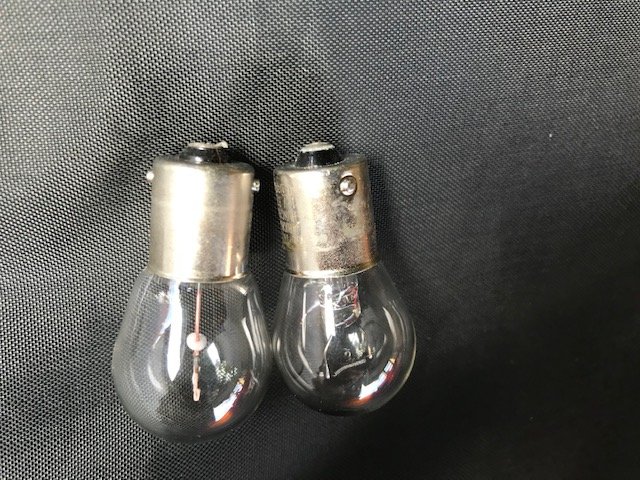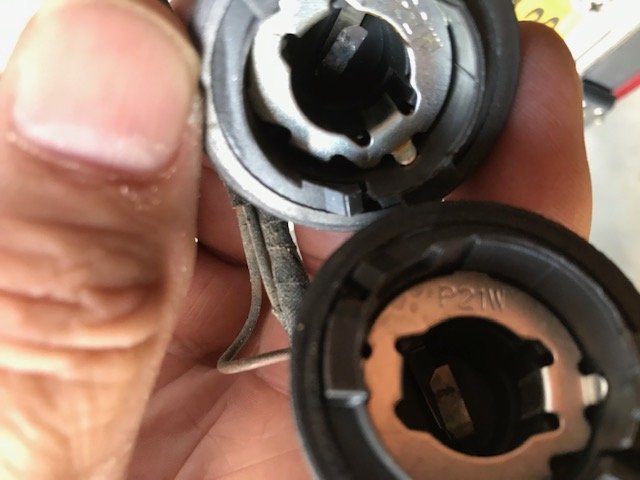mikegalbicka
Back in the saddle again
My rear brake light bulbs seemed to burn out at the same time. I noticed last week when I did my preflight check that there was no rear light or brake light from either and my Skene P3 lights lit but did not flash brake either. Upon inspection today I find continuity on both bulbs but the post contacts burned off to the point they don’t make contact as you can see in the photo of one good turn signal bulb and one bad brake light bulb which are the same part number. The contacts inside the bulb housings look burned as well. Is that the cause or something else at play here?




